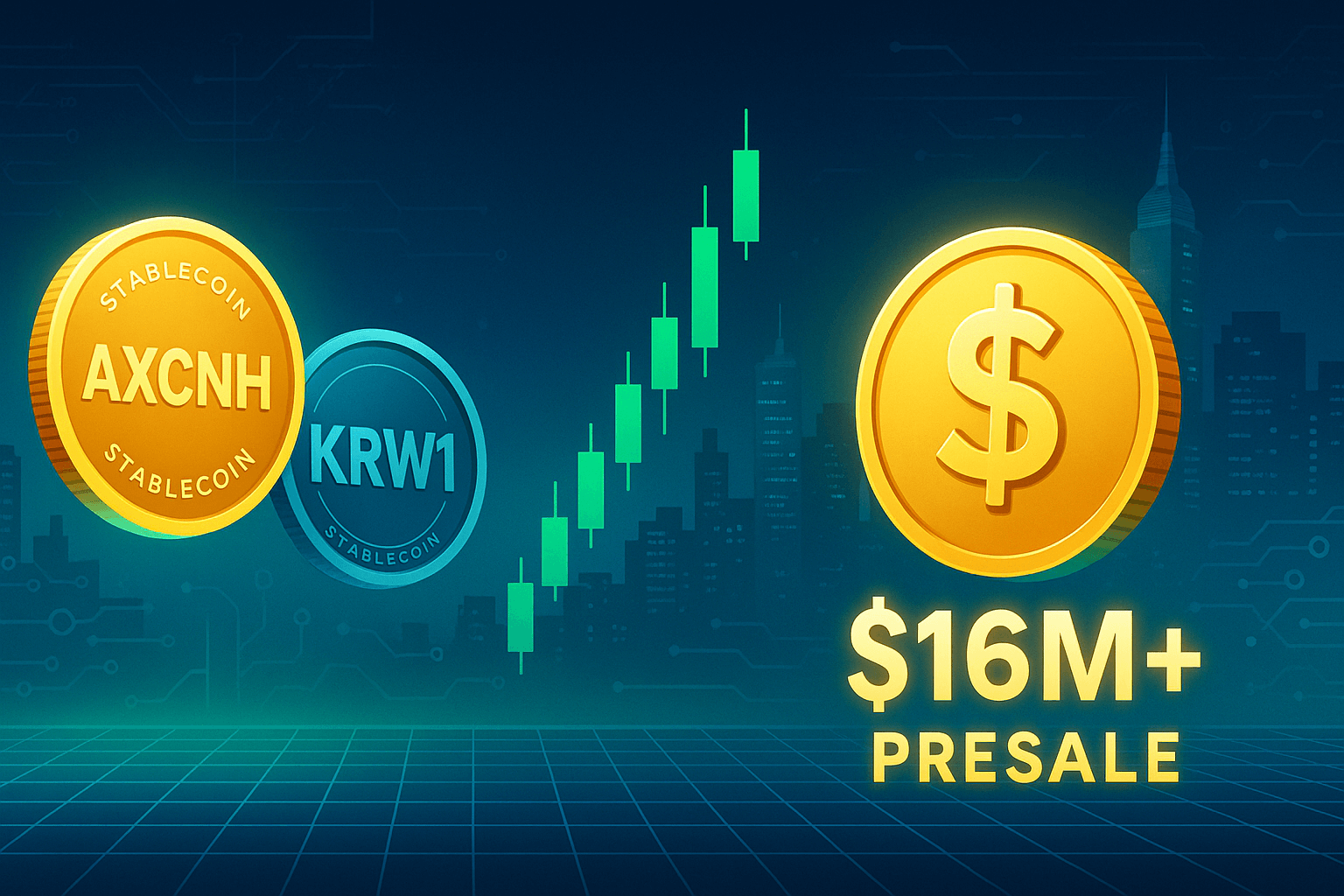Key takeaways
-
Yield-bearing stablecoins embody treasury-backed, DeFi and artificial fashions.
-
US and EU legislation ban issuer-paid curiosity; entry is usually restricted.
-
Rebases and rewards are taxed as revenue when obtained.
-
Risks stay: regulation, markets, contracts and liquidity.
The seek for passive revenue has at all times pushed traders towards property like dividend shares, actual property or authorities bonds.
In 2025, crypto provides one other contender: yield-bearing stablecoins. These digital tokens are designed not simply to carry their worth in opposition to the greenback but additionally to generate a gradual revenue whereas sitting in your pockets.
But earlier than speeding in, it’s necessary to know what these stablecoins are, how the yield is produced and the authorized and tax guidelines that apply.
Let’s break it down step-by-step.
What are yield-bearing stablecoins?
Traditional stablecoins comparable to Tether’s USDt (USDT) or USDC (USDC) are pegged to the greenback however don’t pay you something for holding them. Yield-bearing stablecoins are completely different: They routinely go on returns from underlying property or methods to tokenholders.
There are three main fashions in use in the present day:
-
Tokenized treasuries and cash market funds: These stablecoins are backed by protected property like short-term US Treasurys or financial institution deposits. The yield from these holdings is distributed again to the tokenholders, usually by growing the token steadiness or adjusting its worth. Put merely, you might consider them as blockchain-wrapped variations of conventional cash-equivalent funds.
-
Decentralized finance (DeFi) financial savings wrappers: Protocols like Sky (beforehand MakerDAO) permit customers to lock stablecoins, comparable to Dai (DAI), right into a “financial savings price” module. When wrapped into tokens like sDAI, your steadiness grows over time at a price set by the protocol’s governance.
-
Synthetic yield fashions: Some progressive stablecoins, comparable to these powered by derivatives methods, generate yield from crypto market funding charges or staking rewards. Returns will be larger but additionally fluctuate relying on market circumstances.
Can you earn passive revenue with yield-bearing stablecoins?
The quick reply is sure, although the main points could range by product. Here’s the everyday journey:
1. Choose your stablecoin sort
-
If you need decrease threat and conventional backing, take a look at tokenized treasury-backed cash or money-market fund tokens.
-
If you might be comfy with DeFi threat, take into account sDAI or comparable financial savings wrappers.
-
For larger potential yield (with larger volatility), artificial stablecoins like sUSDe could match.
2. Buy or mint the stablecoin
Most of those tokens will be acquired both on centralized exchanges — with Know Your Customer (KYC) necessities — or instantly by way of a protocol’s web site.
However, some issuers limit entry by geography. For instance, many US retail customers can not purchase tokenized treasury cash attributable to securities legal guidelines (as a result of they’re handled as securities and restricted to certified or offshore traders).
Also, stablecoin minting is normally restricted. To mint, you deposit {dollars} with the issuer, who creates new stablecoins. But this feature just isn’t open to everybody; many issuers restrict minting to banks, cost corporations or certified traders.
For instance, Circle (issuer of USDC) permits solely permitted institutional companions to mint instantly. Retail customers can’t ship {dollars} to Circle; they need to purchase USDC already in circulation.
3. Hold or stake in your pockets
Once bought, merely holding these stablecoins in your pockets could also be sufficient to earn yield. Some use rebasing (your steadiness will increase day by day), whereas others use wrapped tokens that develop in worth over time.
4. Use in DeFi for further earnings
In addition to the built-in yield, some holders make the most of these tokens in lending protocols, liquidity swimming pools or structured vaults to generate extra revenue streams. This provides complexity and threat, so proceed rigorously.
5. Track and document your revenue
Even although the tokens develop routinely, tax guidelines in most international locations deal with these will increase as taxable revenue on the time they’re credited. Keep exact data of when and the way a lot yield you obtained.
Did ? Some yield-bearing stablecoins distribute returns by way of token appreciation as a substitute of additional tokens, which means your steadiness stays the identical, however every token turns into redeemable for extra underlying property over time. This delicate distinction can have an effect on how taxes are calculated in some jurisdictions.
Examples of yield-bearing stablecoins
Not each product that appears like a yield-bearing stablecoin really is one. Some are true stablecoins, others are artificial {dollars}, and a few are tokenized securities. Let’s perceive how they break down:
True yield-bearing stablecoins
These are pegged to the US greenback, backed by reserves and designed to ship yield.
-
USDY (Ondo Finance): It is a tokenized observe backed by short-term treasuries and financial institution deposits, obtainable solely to non-US customers with full KYC and Anti-Money Laundering (AML) checks. Transfers into or inside the US are restricted. USDY acts like a rebasing instrument that displays Treasury yields.
-
sDAI (Sky): sDAI is a wrapper round DAI deposited within the Dai Savings Rate. Your steadiness grows at a variable price determined by Maker governance. It’s broadly built-in in DeFi however depends on good contracts and protocol selections — not insured deposits.
Synthetic stablecoins
These mimic stablecoins however use derivatives or different mechanisms slightly than direct reserves.
-
sUSDe (Ethena): A “artificial greenback” stabilized by lengthy spot crypto plus quick perpetual futures. Holders of sUSDe earn returns from funding charges and staking rewards. Returns can compress rapidly, and dangers embody market swings and change publicity.
Tokenized money equivalents
These should not stablecoins however are sometimes utilized in DeFi as “onchain money.”
-
Tokenized cash market funds (e.g., BlackRock’s BUIDL): Not strictly a stablecoin, however tokenized shares in cash market funds. They pay dividends month-to-month within the type of new tokens. Access is restricted to certified traders and establishments, making them widespread with DeFi protocols however typically out of attain for retail customers.
The 2025 stablecoin rulebook it’s best to know
Regulation is now central as to whether you may maintain sure yield-bearing stablecoins.
United States (GENIUS Act)
-
In 2025, the US handed the GENIUS Act, its first federal stablecoin legislation. A key provision is the ban on issuers of cost stablecoins paying curiosity or yield on to holders.
-
This means tokens like USDC or PayPal USD (PYUSD) can not reward you merely for holding them.
-
The purpose is to cease stablecoins from competing with banks or changing into unregistered securities.
-
As a outcome, US retail traders can not legally obtain passive yield from mainstream stablecoins. Any yield-bearing variations are usually structured as securities and restricted to certified traders or provided offshore to non-US customers.
European Union (MiCA)
Under the Markets in Crypto-Assets (MiCA) framework, issuers of e-money tokens (EMTs) are additionally forbidden from paying curiosity. The EU treats stablecoins strictly as digital cost devices, not financial savings autos.
United Kingdom (ongoing guidelines)
The UK is finalizing its personal stablecoin regime, specializing in issuance and custody. While not but an specific ban, the coverage course matches the US and EU: Stablecoins ought to serve funds, not yield.
The clear message: Always examine if you happen to’re legally allowed to purchase and maintain a yield-bearing stablecoin the place you reside.
Tax concerns for yield-bearing stablecoins
Tax therapy is simply as necessary as choosing the proper coin.
-
In the US, staking-style rewards, together with rebases, are taxed as abnormal revenue when obtained, no matter whether or not they’re offered. If you later get rid of these tokens at a unique worth, that triggers capital positive aspects tax. On prime of that, 2025 has introduced new reporting guidelines that make it necessary for crypto exchanges to challenge Form 1099-DA, and taxpayers should monitor price foundation per pockets, making correct record-keeping extra essential than ever.
-
In the EU and globally, new reporting guidelines (DAC8, CARF) imply crypto platforms will routinely report your transactions to tax authorities from 2026 onward.
-
In the UK, HMRC steering classifies many DeFi returns as revenue, with disposals of tokens additionally topic to capital positive aspects tax.
Risks to bear in mind if you’re contemplating yield in your stablecoins
While yield-bearing stablecoins sound engaging, they’re not risk-free:
-
Regulatory threat: Laws can change rapidly, shutting off entry or winding down merchandise.
-
Market threat: For artificial fashions, yield is determined by risky crypto markets and may disappear in a single day.
-
Operational threat: Smart contracts, custody preparations and governance selections can all have an effect on your holdings.
-
Liquidity threat: Some stablecoins limit redemptions to sure traders or impose lock-ups.
So, whereas chasing yield on stablecoins will be rewarding, it’s not the identical as parking money in a checking account. Each mannequin, whether or not Treasury-backed, DeFi-native or artificial, carries its personal trade-offs.
The smartest strategy is to dimension positions cautiously, diversify throughout issuers and methods and at all times keep watch over regulation and redemptions. The finest technique to go about that is to deal with stablecoin yields like an funding product, not risk-free financial savings.
This article doesn’t comprise funding recommendation or suggestions. Every funding and buying and selling transfer includes threat, and readers ought to conduct their very own analysis when making a choice.









